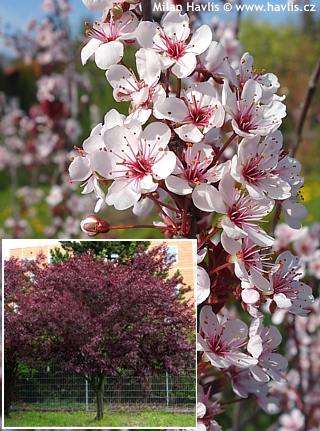Prunus cerasifera 'NIGRA' (syn. 'Pissardii Nigra') myrobalan, purple-leaved cherry plum
Prunus
Myrobalan or purple-leaved cherry plum is one of the most popular deciduous trees, cherished for its colour, minimal maintenance requirements, and adaptability to various soil and temperature conditions. It originates from Southeastern Europe and Western Asia, from where it rapidly spread to all temperate climate regions. In Australia, it thrives so well that it is beginning to show mildly invasive tendencies. Fortunately, this is not a concern in Central Europe.
The very first purple-leaved cherry plum was introduced to Europe by M. Pissard in 1880, the gardener at the court of Persian Shah Naser al-Din Shah (who reigned from 1848 to 1896). He sent the first plant from the palace in Tabriz to France for trials. It immediately gained admiration and quickly became a favourite, which was soon confirmed by the prestigious AGM (Award of Garden Merit) granted by the Royal Horticultural Society (RHS) in 1928.
Nigra is a myrobalan variety bred by Luther Burbank in 1916 in the USA which quickly spread as an ornamental tree. Luther was a fascinating figure and a pioneer in plant breeding, who developed more than 800 new varieties throughout his career. Among his most notable creations are Shasta daisies, the Santa Rosa plum (Prunus salicina ‘Santa Rosa’), the Russet Burbank potato, and even a thornless cactus designed as livestock feed.
Nigra myrobalan is particularly admired for its intensely dark leaf colour, which remains consistent throughout the season. The leaves are deciduous, elongated oval to broadly ovate. In spring, they are deep purple to almost black and retain this shade throughout the season. Unlike the Pissardii variety, which has a wine-red hue, Nigra is significantly darker, making it a striking choice for garden design.
Nigra myrobalan blooms abundantly with pale pink flowers about 2.5 cm in diameter, appearing from late March to April, often simultaneously with leaf emergence. It produces an exceptionally abundant and early bloom, often preceding blackthorns and Japanese cherries, providing excellent bee food. In summer, pollinated flowers develop into (edible but not very delicious) dark red drupes, though the tree bears fruit only sparingly. The sight of a large tree covered in soft pink blossoms brings fresh joy to gardeners in spring and heralds the arrival of warmer days.
In nurseries, it is shaped into a single-trunk standard tree or an attractive multi-stemmed form with a clean lower framework, though naturally, it forms densely branched shrubs with low branching and a broadly funnel-shaped silhouette. When grown as a tree, its crown gradually develops into a broad oval to nearly rounded shape. It is not a tall tree—typically reaching about six metres in height and width, though older specimens in parks with unrestricted root space can grow somewhat larger.
This vividly coloured, smaller tree is excellent for breaking up monotonous green landscapes or serving as a specimen complementing a differently coloured facade. It pairs well with urban greys and various shades of cream. It can be pruned and shaped freely, ideally right after flowering and no later than mid-summer. In England, pruning is widely practiced, and the tree is often planted in hedgerows, creating a striking colour statement.
Myrobalan is a very hardy and reliable tree. It is well-suited for urban and industrial environments, as it tolerates polluted air exceptionally well. It is not demanding in terms of soil, but for a truly beautiful tree with lush foliage and dense branching, plant it in slightly acidic soil that retains moisture without becoming waterlogged. In its early years, provide a few handfuls of slow-release organic fertiliser in early spring. Trees should be firmly staked for the first three to five years, and grass should not be allowed to grow over their roots. It is fully hardy down to approximately -40 °C (USDA zone 3) and is suitable even for mobile greenery in large containers.
Last update 07-12-2008; 23-05-2025

































.jpg)
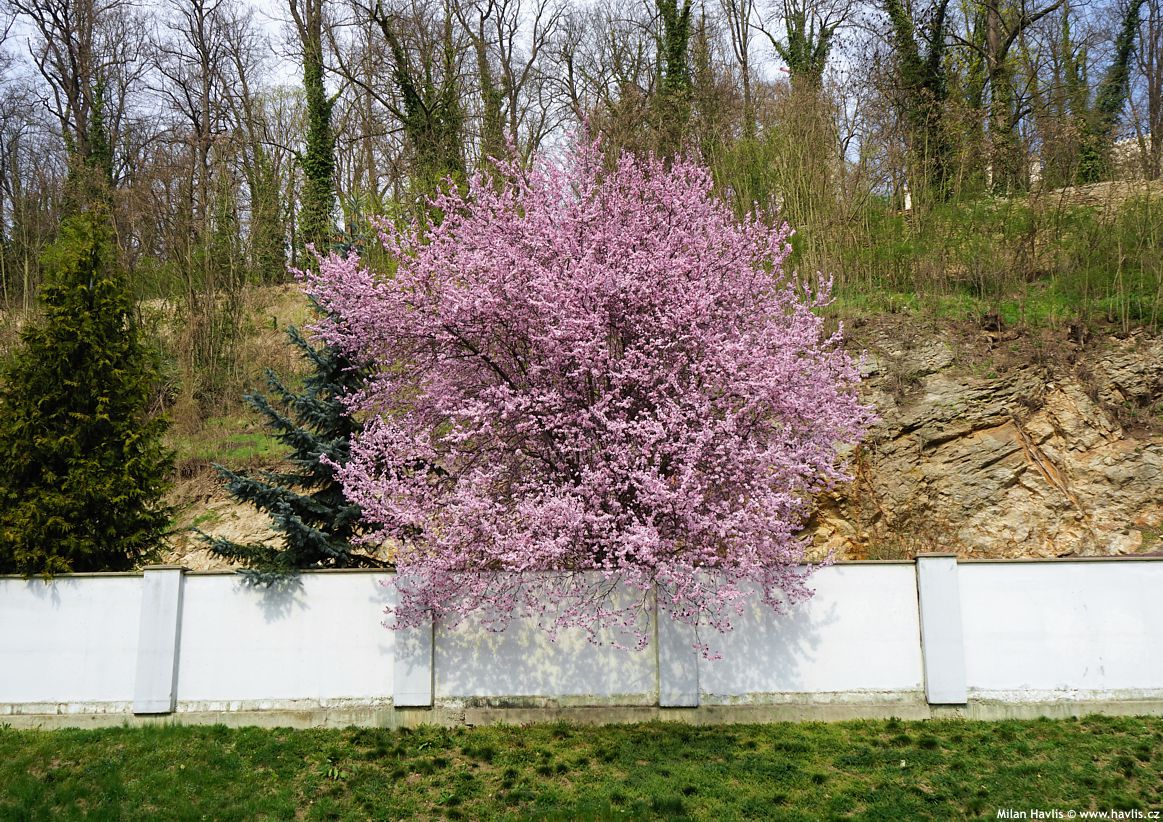
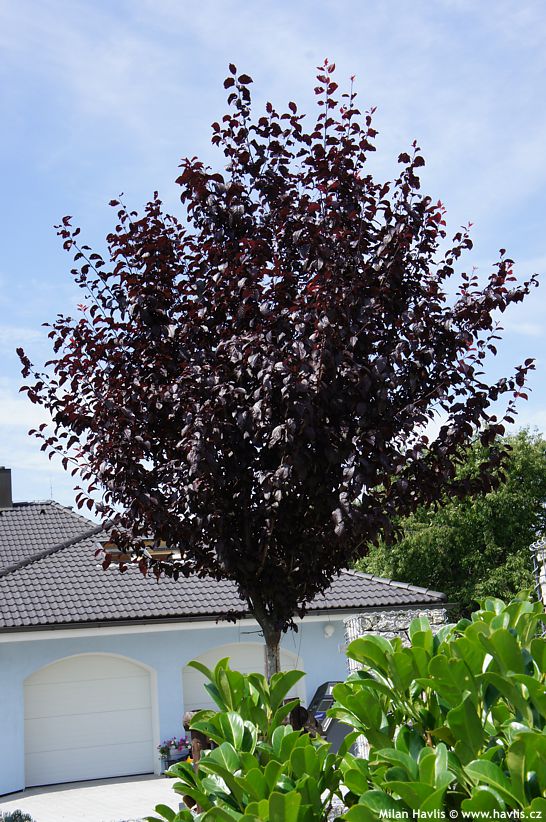
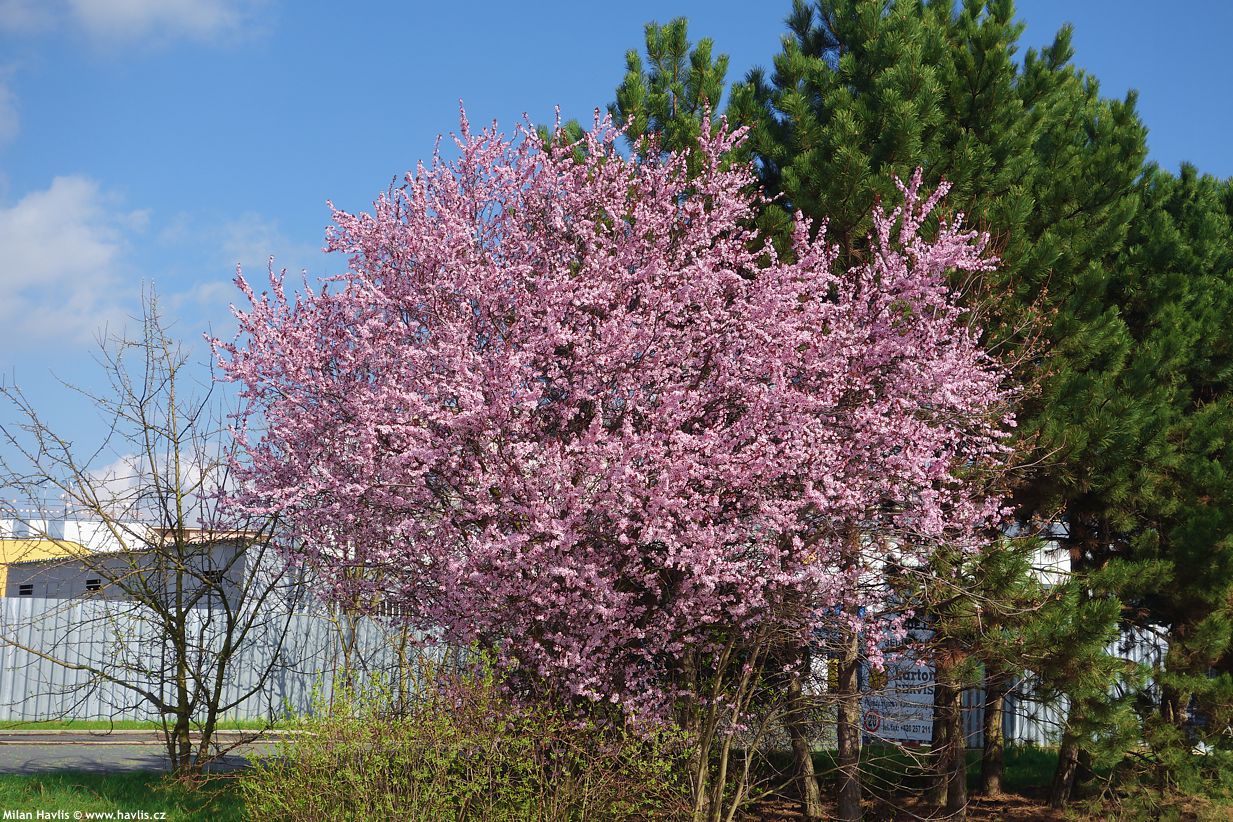
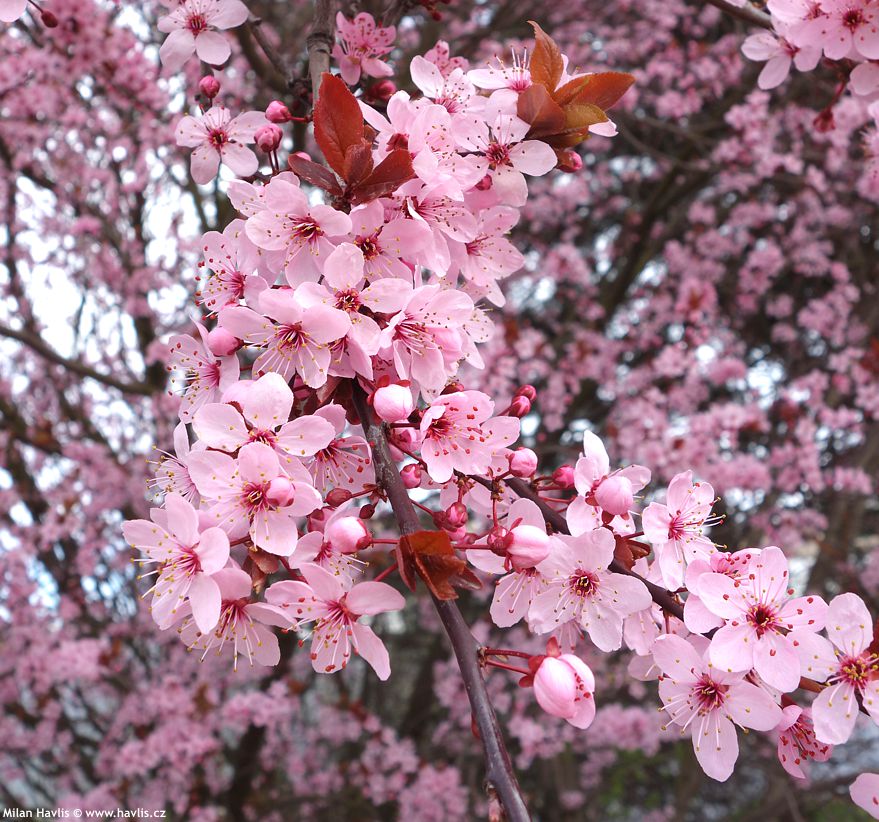
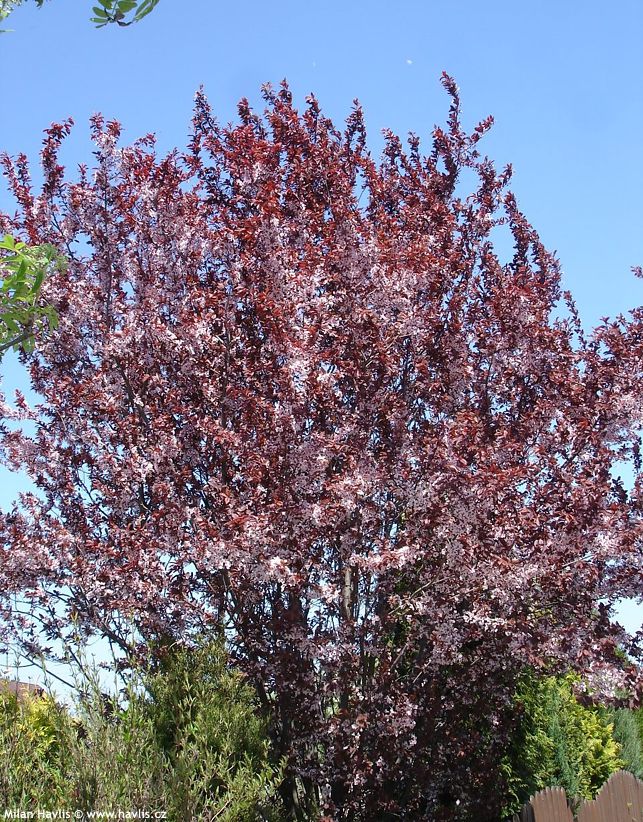
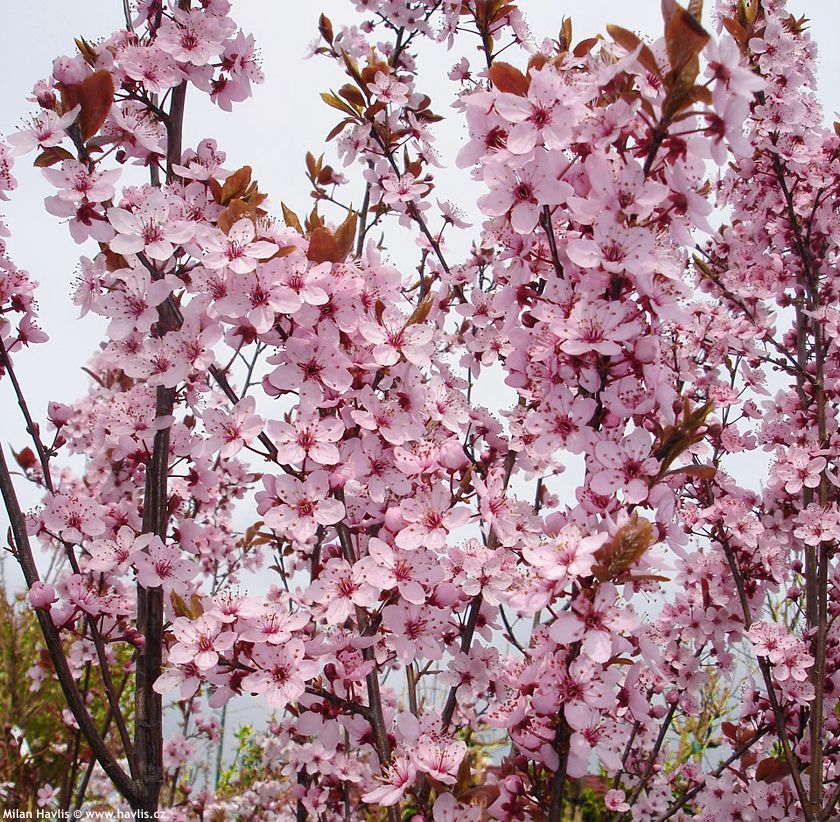
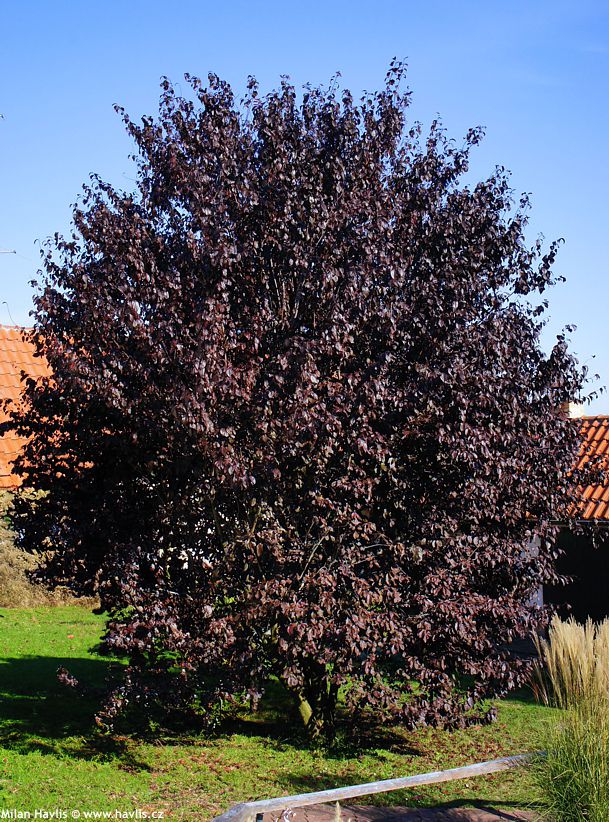


.jpg)
